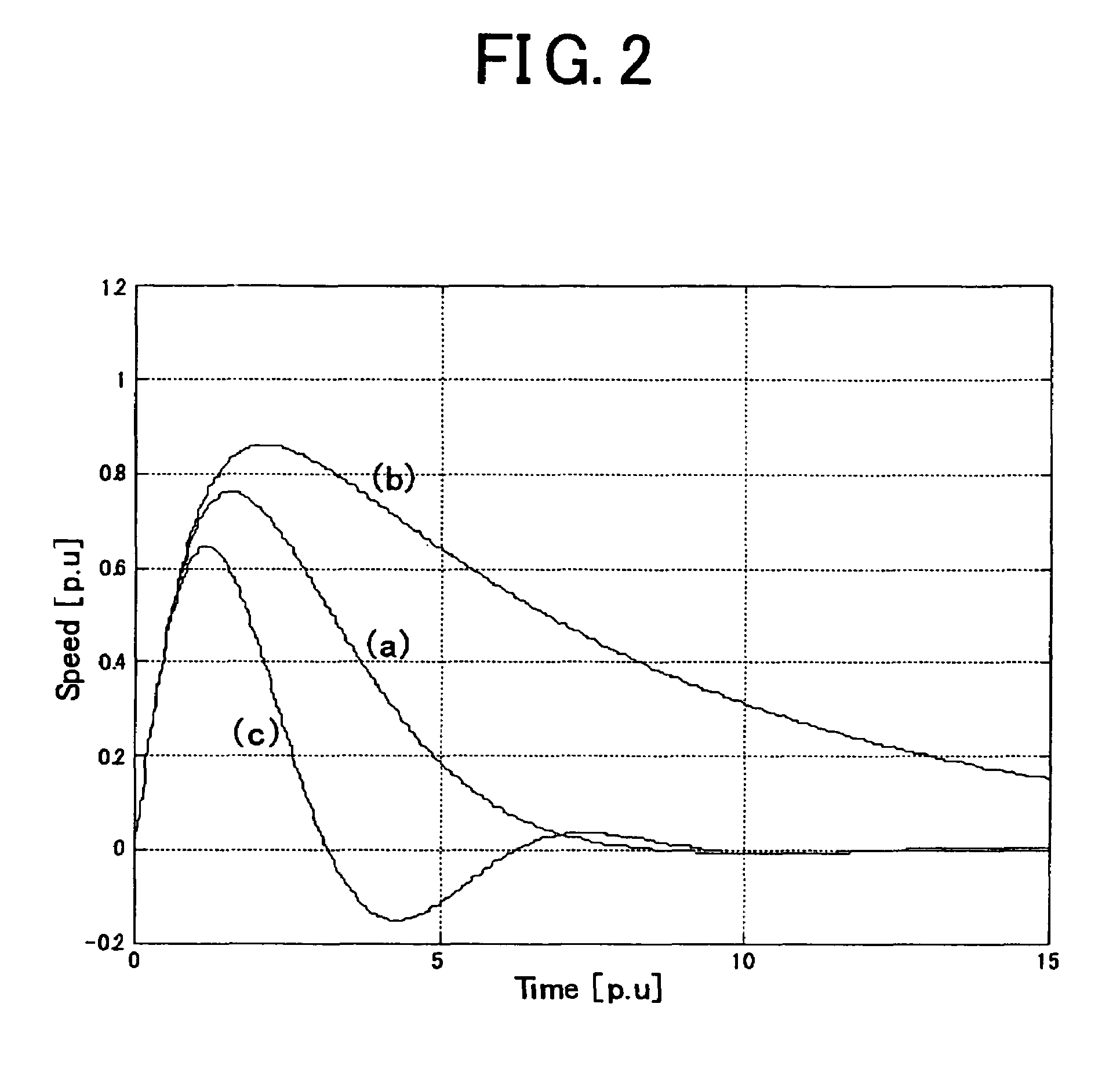Motor controller
a motor controller and controller technology, applied in the direction of electric controllers, ignition automatic control, instruments, etc., can solve the problems of time, manpower, and difficulty for beginners to adjust, and achieve the effect of short tim
- Summary
- Abstract
- Description
- Claims
- Application Information
AI Technical Summary
Benefits of technology
Problems solved by technology
Method used
Image
Examples
embodiment 1
[0021]FIG. 1 is a block diagram illustrating a motor controller for Embodiment 1 of the present invention. A motor 1 generates a torque responding to torque commands τr, to drive a controlled object 3 composed of the motor 1 and a mechanical load 2 coupled with the motor 1. Moreover, a motor speed vm that is the rotational speed of the motor 1 is detected by detecting a motor angle θm that is the rotational angle of the motor 1 by an encoder 4, and then differentiating, by a speed computation unit 5, the motor angle θm.
[0022]Next, a speed command vr and the motor speed vm are inputted to a feedback computation unit 6, and the feedback computation unit 6 computes torque commands τr by the computation described below.
[0023]In the feedback computation unit 6, the difference signal between the speed command vr and the motor speed vm is inputted to a speed proportional amplifier 7, and the speed proportional amplifier 7 outputs the signal to multiply the input by a speed gain Kv. Next, t...
embodiment 2
[0046]FIG. 3 is a block diagram illustrating a motor controller relevant to Embodiment 2 of the present invention. The same numerals as those of FIG. 1 show the same units and their explanations are therefore omitted. This Embodiment is configured by adding to Embodiment 1 a mechanical characteristic estimation unit 51 and an input and an output thereof, and explanations will be made for these units.
[0047]The mechanical characteristic estimation unit 51 estimates a mechanical resonance frequency of the controlled object 3 based on the detected motor speed vm, for example, by such a method as measuring vibration frequency when motor speed vm oscillates. Moreover, it is judged which is better for the second switching signal sw2 to select the setting of an absolute value or the setting of a ratio, based on the estimated mechanical resonance frequency, and the estimation unit 51 sets out the result to the second switching signal input unit 18. As a judgment method, as explained in Embod...
embodiment 3
[0051]FIG. 4 is a block diagram illustrating a motor controller relevant to Embodiment 3 of the present invention. The present Embodiment relates to a motor controller that performs positional control, although Embodiment 1 and 2 relate to speed control. The same numerals as those of FIG. 1 show the same units and their explanations are therefore omitted.
[0052]A positional command θr and the motor angle θm are inputted into a feedback computation unit 106, and it computes the torque commands τr by the operation described next.
[0053]In the feedback computation unit 106, the difference signal between the positional command θr and the motor angle θm is inputted to a positional proportional amplifier 131, and then the positional proportional amplifier 131 outputs the signal, as the speed command vr, in which the input has been multiplied by positional gain Kp. Next, the difference signal between the speed command vr and the motor speed vm which the motor angle θm has been differentiated...
PUM
 Login to View More
Login to View More Abstract
Description
Claims
Application Information
 Login to View More
Login to View More - R&D
- Intellectual Property
- Life Sciences
- Materials
- Tech Scout
- Unparalleled Data Quality
- Higher Quality Content
- 60% Fewer Hallucinations
Browse by: Latest US Patents, China's latest patents, Technical Efficacy Thesaurus, Application Domain, Technology Topic, Popular Technical Reports.
© 2025 PatSnap. All rights reserved.Legal|Privacy policy|Modern Slavery Act Transparency Statement|Sitemap|About US| Contact US: help@patsnap.com



